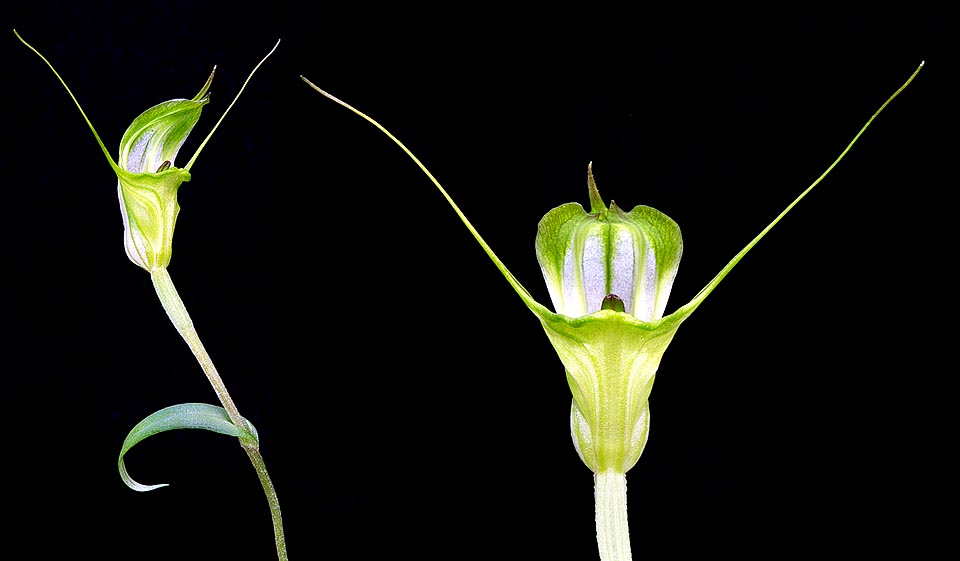Family : Orchidaceae

Text © Pietro Puccio

English translation by Mario Beltramini
The species is native to Australia (Lord Howe Island, New South Wales, Queensland, Tasmania and Victoria) where it grows in the open humid forests at low and medium altitudes.
The generic name is the combination of the Greek substantives “πτερόν” (pteron) = wing and “στῦλος” (stylos) = column with reference to the two wings present at the apex of the column; the specific name is the Latin adjective “obtusus, a, um” = obtuse, with reference to the apex of the labellum.
Common names: blunt tongue greenhood, jug-lip greenhood (English).
The Pterostylis obtusa R.Br. (1810) is a deciduous terrestrial species with ovoid underground tuber and basal rosette of 3-6 leaves, on an about 0,7 cm long petiole, oblong-ovate with entire or wavy margin, 1-3 cm long and 0,5-1,5 cm broad, of dark green colour.

Rare in cultivation, Pterostylis obtusa is an Australian deciduous terrestrial species with underground tuber and 3-6 leaves basal rosette. Odd 2,5 cm long tubular flower © Giuseppe Mazza
Species rare in cultivation, can be placed outdoors in full ground in shady position where the lowest winter temperatures do not get under the 10 °C, otherwise is to be cultivated in little deep pots or in bowls utilizing a mix of normal garden earth, leaf mold and agri perlite in equal parts. The waterings must be regular from spring to autumn, whilst in winter it is maintained rather dry.
The species is reported in the appendix II of CITES (species whose trade is internationally ruled).
Synonyms: Diplodium obtusum (R.Br.) D.L.Jones & M.A.Clem. (2002).
→ For general notions about ORCHIDACEAE please click here.
